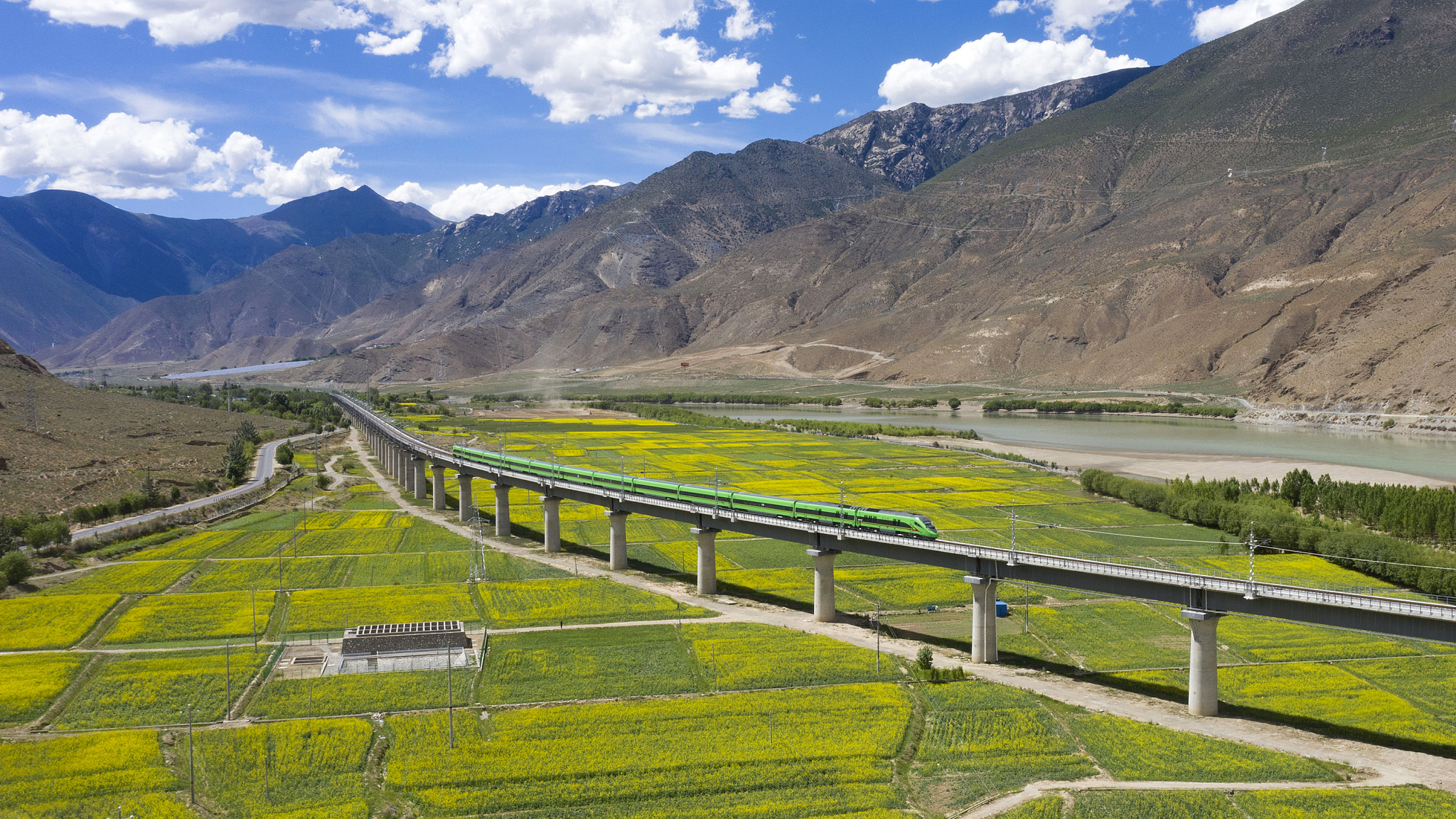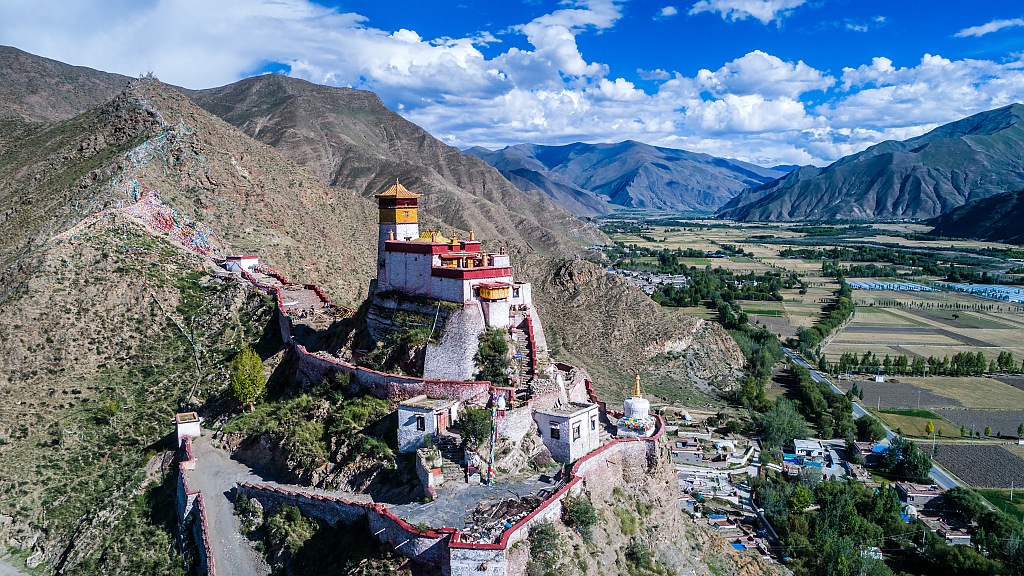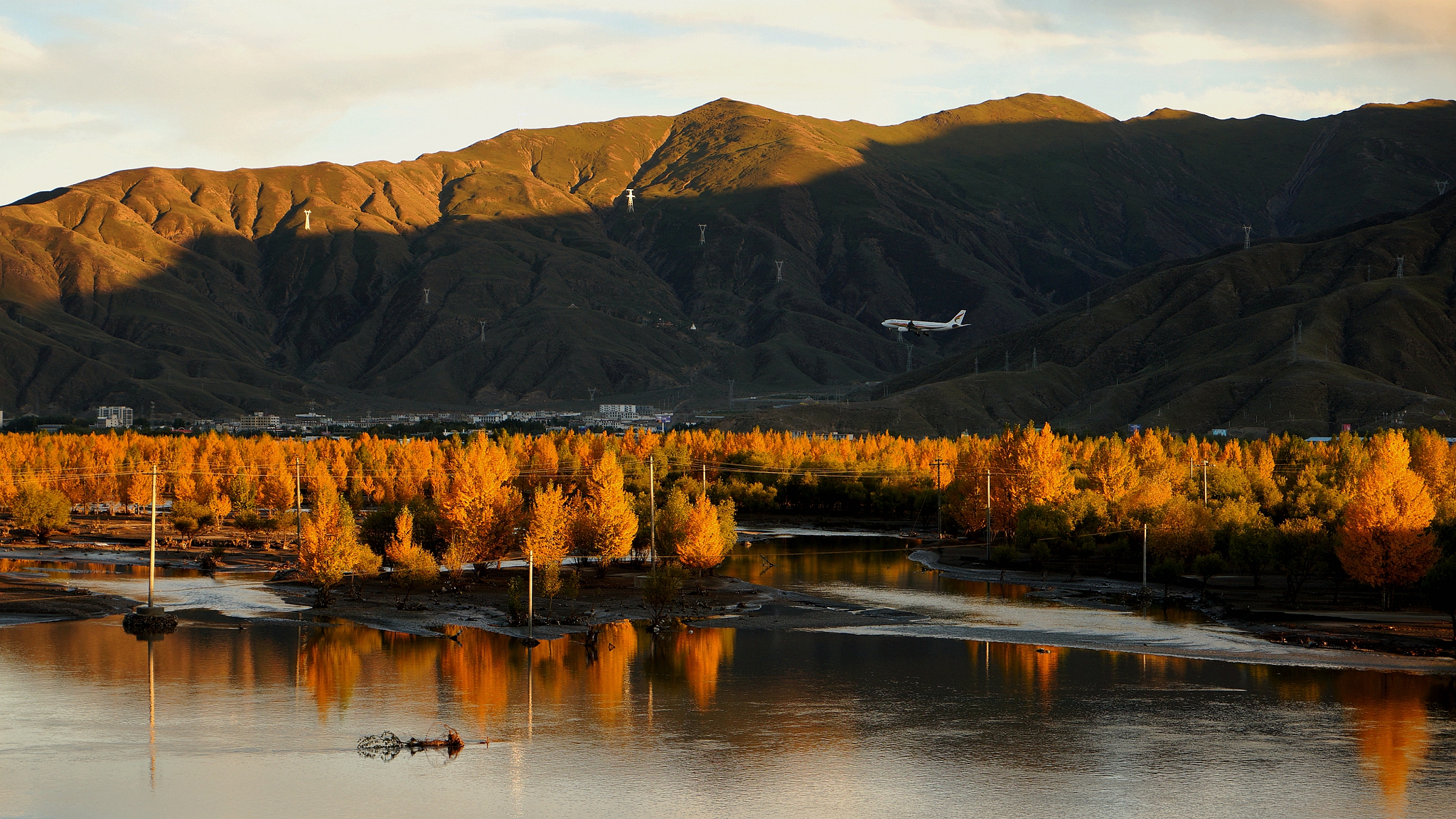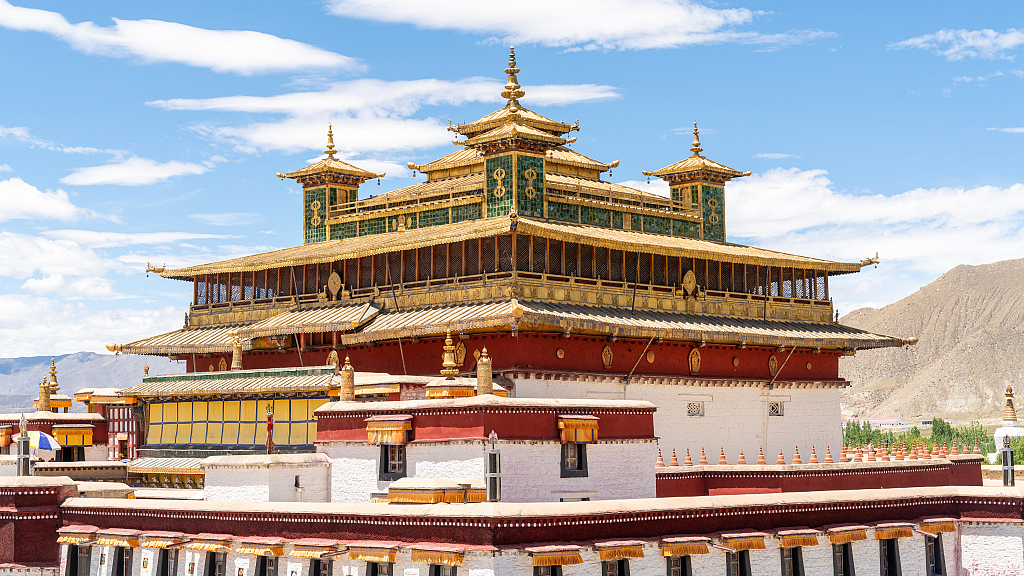Meditation Retreats
Along Tibet’s New Railroad: Birthplace of Tibetan Culture, Shannan

Fuxing bullet trains now operate in the Tibet Autonomous Region of China. The Lhasa-Nyingchi Railway, which runs through southeast Tibet and allows travelers to explore the beautiful hinterland, began operating at the end of June.
The 435-kilometer train shortens the journey between Lhasa and Nyingchi by 3.5 hours. According to a statement by the China State Railway Group released last week, more than 106,000 passenger journeys were recorded in the first month of operation, with a daily average of 3,500 journeys.
From Tibet’s first palace, Yumbulagang Palace, to the deepest canyon in the world, the Yarlung Tsangpo Grand Canyon, tourists can enjoy the majestic and mysterious landscapes of southeast Tibet.

A Fuxing bullet train travels on the Lhasa-Nyingchi Railway during trial operation in Shannan, Tibet Autonomous Region, SW China, June 24, 2021. / CFP
A Fuxing bullet train travels on the Lhasa-Nyingchi Railway during trial operation in Shannan, Tibet Autonomous Region, SW China, June 24, 2021. / CFP
CGTN’s new “Along Tibet’s New Railroad” series will spotlight nine main railway stations – Gonggar, Zhanang, Shannan, Sangri, Gyaca, Nang County, Mainling, Gangga and Nyingchi, immersing themselves in the diverse natural resources and rich cultural Background from a cities and counties of southern Tibet.
The first episode shows three cradles of Tibetan culture: Gonggar County, Zhanang County, and Shannan City.
With an area of more than 2,280 square kilometers, Gonggar County is one of the 11 counties under the jurisdiction of Shannan and is home to around 53,700 residents as well as numerous wildlife species such as wild yak, wild ass, Tibetan antelope, Tibetan gazelle and black-necked cranes.

Gonggar has many unique historical monuments, such as Dorjedrak Monastery, which is located on the north bank of the Yarlung Tsangpo River. The district is bordered by Chuwori Mountain, one of the holiest mountains in Tibet, which is considered to be the “origin of happiness”.
Among the five cities of Gonggar is Jedeshol Town, known as the hometown of the famous apron worn by the Tibetan married women. With around 600 years of history, the time-honored craft has a rainbow of colors and a distinctive style that has become increasingly popular at home and abroad in recent years.
Today, the district is an important traffic junction in the region, as Lhasa Gonggar Airport, the largest air traffic hub, with its Terminal 3 was built here, which is scheduled to go into operation on August 7th.

Zhanang, also a county of Shannan, covers a total area of 2,173 square kilometers with a population of 36,656 as well as numerous notable landmarks and historical religious sites such as Samye Monastery, the first of its kind in Tibet, and Mindroling Monastery. which was built in 1677 and contains a large number of Buddhist scriptures.
Divided into northern and southern parts by the Yarlung Tsangpo River, the county has rich natural geological features including lakes, valleys and caves. Among them is the Chimpu Meditation Caves, a picturesque place located near the Samye Monastery on the north bank of the river, which attracts large numbers of pilgrims every year.
Traditionally, there were 108 meditation caves dotted around the mountainside, and some of them are still used today by the hermits, monks, and nuns for meditation retreats.

Shannan, also called Lhoka in Tibetan, is located in southern Tibet and is a prefecture-level city bordering Lhasa to the north, Shigatse to the west and Nyingchi to the east, with one district and 11 counties such as Gonggar and Zhanang. under his jurisdiction.
The Yarlung Tsangpo River, the mother river of the Tibetan people, flows through Gonggar County and other Shannan Counties, and the prefecture is therefore rich in water resources and contains some sacred lakes such as Yamdrok Lake and Puma Yutso Lake, which like glittering jewelry on the plateau.
Surrounded by snow-capped mountains, Yamdrok Lake, also known as Yamdrok Yumtso, is one of the three largest sacred lakes in Tibet 638 square kilometers. The largest lake in southern Tibet is home to the Samding Monastery, which stands on a hill on a peninsula jutting into the lake.

Surrounded by snow-capped mountains, Yamdrok Lake, also known as Yamdrok Yumtso, is one of the three largest sacred lakes in Tibet, China. / CFP
Surrounded by snow-capped mountains, Yamdrok Lake, also known as Yamdrok Yumtso, is one of the three largest sacred lakes in Tibet, China. / CFP

Yumbulagang Palace is the first palace in Tibet to be built over 2,100 years ago and is located in Shannan, Tibet, China. / CFP
Yumbulagang Palace is the first palace in Tibet to be built over 2,100 years ago and is located in Shannan, Tibet, China. / CFP

Autumn view of the Yarlung Tsangpo River that flows through Gonggar County, Shannan City, Tibet, China. / CFP
Autumn view of the Yarlung Tsangpo River that flows through Gonggar County, Shannan City, Tibet, China. / CFP

Samye Monastery is located in Zhanang County, Shannan City, Tibet, China. / CFP
Samye Monastery is located in Zhanang County, Shannan City, Tibet, China. / CFP
In addition to the above monasteries, Shannan, considered the cradle of Tibetan culture, has a significant number of notable historical monuments and sites, such as the Yumbulagang Palace, the first palace in Tibet over 2,100 years ago, and the palace of the first Tibetan king Nyatri Tsenpo and the Trandruk Temple, one of the earliest Buddhist monasteries in the highlands.
Today, travelers can also check out other new attractions that have sprung up in the city in recent years, including the Shannan Museum, which opened last September, with a collection of around 4,000 priceless antique items that showcase the history and culture of the city and region .
(Cover picture and graphics designed by Liu Shaozhen)




